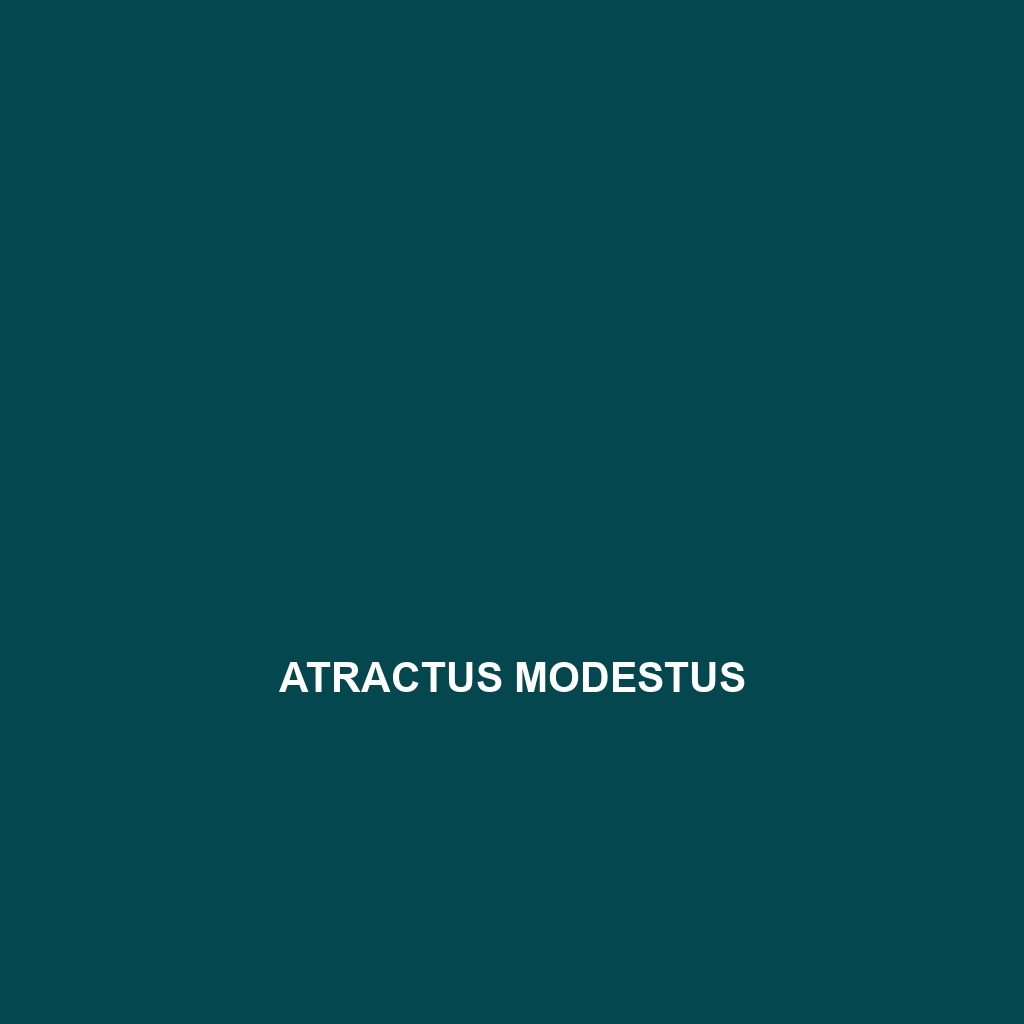Atractus modestus: A Comprehensive Species Description
Common Name: Atractus modestus
Scientific Name: Atractus modestus
Habitat
Atractus modestus is primarily found in the lush, tropical regions of Central and South America. Its geographic distribution includes areas in Colombia, Venezuela, and parts of the Amazon basin. This species thrives in humid, forested environments, favoring moist leaf litter and hidden crevices that provide shelter from predators and environmental extremes.
Physical Characteristics
Measuring between 50 to 80 centimeters in length, Atractus modestus is a slender, elongated snake with a distinctive appearance. The coloration varies, typically featuring shades of brown and black, which serve as effective camouflage in its natural habitat. Notably, this species exhibits smooth scales and a pointed snout, aiding in burrowing and navigating through dense underbrush.
Behavior
Atractus modestus is primarily nocturnal, engaging in foraging activities during the night when it hunts for food. This snake is known for its secretive nature and often remains hidden under logs or within leaf litter. Its defensive behavior includes a tendency to flee rather than confront threats, making it difficult to spot in the wild.
Diet
The diet of Atractus modestus primarily consists of small invertebrates, with a particular preference for earthworms and insects. This species is considered a specialist feeder, relying on its ability to locate prey hidden within the leaf litter of its forest floor habitat. Understanding the dietary patterns of Atractus modestus is crucial for appreciating its ecological role and adaptations in its environment.
Reproduction
Atractus modestus exhibits ovoviviparous reproductive habits, meaning that females give birth to live young instead of laying eggs. The breeding season typically occurs during the rainy months, which coincide with abundant food availability. After a gestation period of several months, females can give birth to up to ten offspring, which are independent and fully developed at birth.
Conservation Status
Atractus modestus is currently classified as a species of “Least Concern” according to the IUCN Red List. However, its habitat is increasingly threatened by deforestation and habitat loss, prompting concerns about its long-term viability in the wild. Conservation efforts are necessary to ensure that Atractus modestus can continue to thrive in its natural environment.
Interesting Facts
One fascinating fact about Atractus modestus is its ability to distinguish between different types of prey using specialized chemosensory capabilities located on its tongue. This adaptation enhances its foraging success in the dense understory of tropical forests. Additionally, the species is often overlooked due to its elusive behavior, making it less known among reptile enthusiasts.
Role in Ecosystem
Atractus modestus plays a vital role in its ecosystem as both predator and prey. As a consumer of small invertebrates, it helps control the populations of these organisms, contributing to the overall balance within its habitat. Furthermore, Atractus modestus serves as a food source for larger predators, thereby integrating into the intricate web of ecological interactions that sustain biodiversity in tropical environments.
